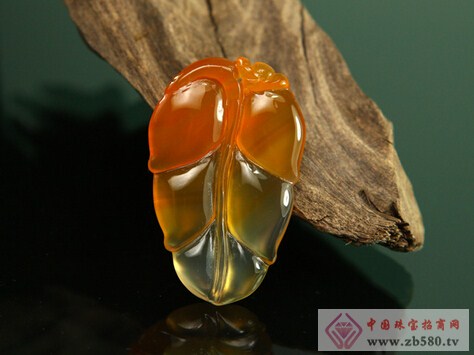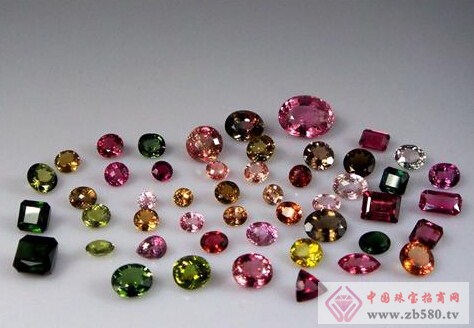Chalcedony and tourmaline
Today, Xiaobian will introduce you to the chalcedony and tourmaline, let's get to know it. The meaning of chalcedony: Chalcedony is a kind of mineral, also known as "stone marrow". Chalcedony is actually a kind of quartz, the collective name of cryptoplast of SiO2, which is a variant of quartz (cryptocrystalline). It is produced in the form of a breast or a bell milk, and is often kidney-shaped, milky, grape-like, etc., with waxy light. Chalcedony is formed under low temperature and low pressure conditions, and appears in the cavity of the ejected rock, hydrothermal veins, hot spring sediments, debris deposits and weathering crusts. Some chalcedony tuberculosis contains water and bubbles, which is very interesting. Its physical properties are the same as quartz. Chalcedony is used as a gemstone and is mainly used as a material for arts and crafts. Chalcedony is the fingerprint with agate. It is a variety of lines with a trace of agate. Like the famous bloodstone, it is chalcedony. Type of chalcedony Carnelian The carnelian is also known as Sadoine stone or Mecca stone, and English is also spelled "Carnelian", produced in the Tibetan Plateau. The English name comes from the Latin word "carne" (blood flesh), meaning its orange color. The red chalcedony is a translucent chalcedony with delicate texture, crystal clear, pure and strong color, and high hardness. It is a kind of gemstone with low price. Blue chalcedony Blue chalcedony is a colored gem that is widely used as an ornament. It is said that the highest quality blue chalcedony was found in the ancient Greeks of Karlsden, hence the name. Blood chalcedony Blood chalcedony is bloodstone, the sacred stone of the legendary legend of Christian blood. The blood chalcedony is a stone with red spots in the dark green. These red spots look like blood drops, so they are called "bloodstone". Green chalcedony The green chalcedony, with a little yellow in the refreshing emerald green, often reminds people of the "gems born in gold." The color and appearance are especially like jade, which is favored by everyone. Chalcedony Chalcedony, this is a rare color of chalcedony, the most precious of which is the golden transparent golden water bodhi. Gold represents luck, so it is more popular with business, white-collar workers and businessmen. Black chalcedony Black chalcedony, which is one of the most common chalcedony colors, because it is formed at a relatively low temperature, so it contains a lot of other mineral elements. The black chalcedony has many colors of iron, potassium and selenium, so the color is purple-black and dark black. The meaning of tourmaline: Tourmaline, also known as tourmaline, is a borosilicate crystal and can contain elements such as aluminum, iron, magnesium, sodium, lithium, and potassium. It is because of these chemical elements that tourmaline can present a wide variety of colors. The English name Tourmaline is derived from the ancient Turga (Ceylon) word Turmani, meaning "mixed gems." Type of tourmaline 1, according to the color of the tourmaline can be divided into: Blue tourmaline (Indicolite): a general term for light blue to deep blue tourmaline. Blue tourmaline is now the most valuable color in the tourmaline because it is rare. Blue tourmaline is produced in the yellow clay of Russian Siberian weathered granite, also in Brazil, Madagascar and the United States. Rubelite: A general term for pink to red tourmalines. Red is the best of the tourmaline with purple and rose red, and it is called the red tourmaline. In China, there is the name of “baby faceâ€. However, the natural world produces more brown, maroon, and deep red, and the color tone changes greatly. At the same time, the proportion of tourmaline will vary with color; the proportion of deep red is greater than that of pink. Brown tourmaline (Dravite): darker in color, rich in chemical element magnesium. Brown tourmalines are mostly produced in Sri Lanka, the three countries of North America, Brazil and Australia. (The English name for brown tourmaline originates from the Dreve region of Austria. Achroite: Colorless tourmaline is very rare, with only a small amount of production in Madagascar and California. It should be noted that some colorless tourmalines in the market are made by heating and bleaching pink tourmaline. (The English name for colorless tourmaline is derived from the ancient Greek word "achroos", meaning colorless) Green Tourmaline: Green and yellow tourmalines are the most common of all tourmaline color variants, so they are also less valuable than blue and red tourmalines. Green tourmalines are prolific in Brazil, Tanzania and Namibia, while yellow is distributed in Sri Lanka. Multicolor Tourmaline: Because the tourmaline ribbon is very developed, red, green, two-color or three-color ribbons often appear on a crystal. Commonly known as red and green gems, commonly known as Watermelon Tourmaline, are popular with collectors and consumers alike. 2. According to the special optical effect, the tourmaline can be divided into: Tourmaline Cat's Eye: When the tourmaline contains a large number of parallel fibrous and tubular inclusions, the cat's eye effect is called a tourmaline cat eye when it is ground into a gemstone. Color-changing tourmaline: a clear-eyed tourmaline, but rare. The above mainly introduces the meaning and types of chalcedony and tourmaline. I hope the above information will help you. Cotton Shoes,Custom Cotton Shoes,Cotton Shoes Online,Cotton Traders Trainers Henan Jiahong shoes Co., Ltd. , https://www.jhshoetowng.com
